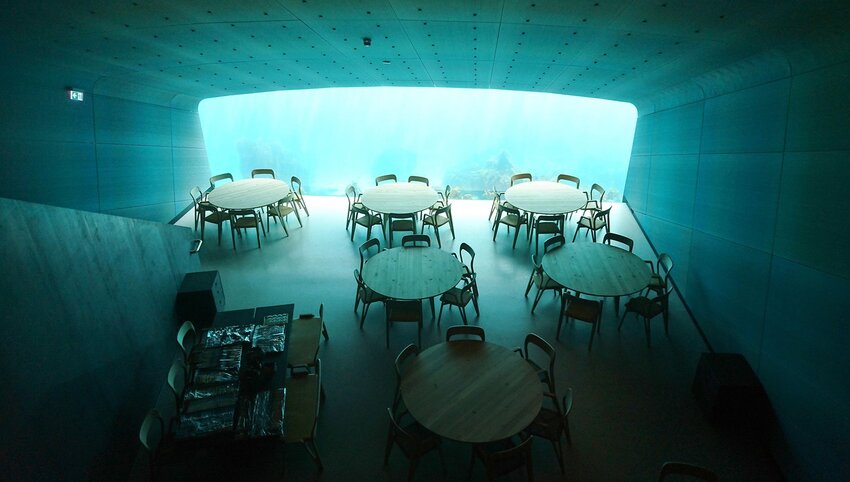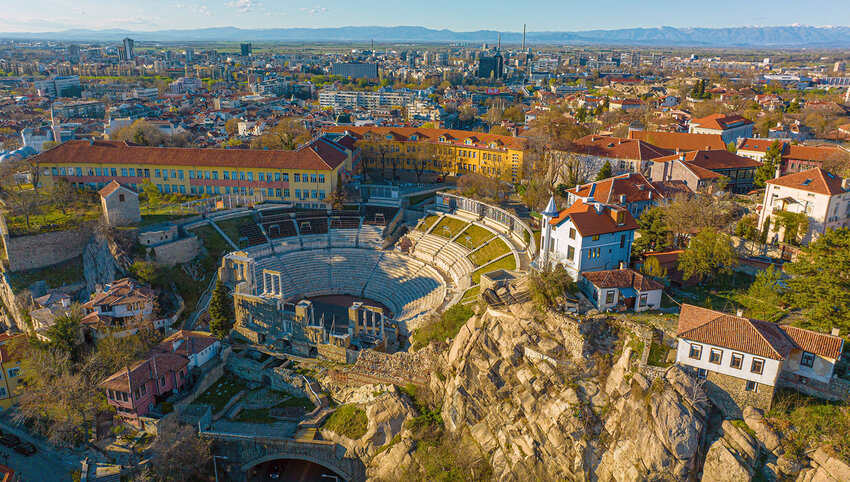Some of the world’s greatest wonders aren’t found on land — instead, they’re located under the sea. And depending on how far below the surface they are, many of these attractions are accessible to snorkelers, scuba divers, and even diners. From spectacular submarine landforms to a plethora of objects that have been sunk deliberately or accidentally, these are the underwater wonders you can – and should – visit.
The Great Blue Hole, Belize
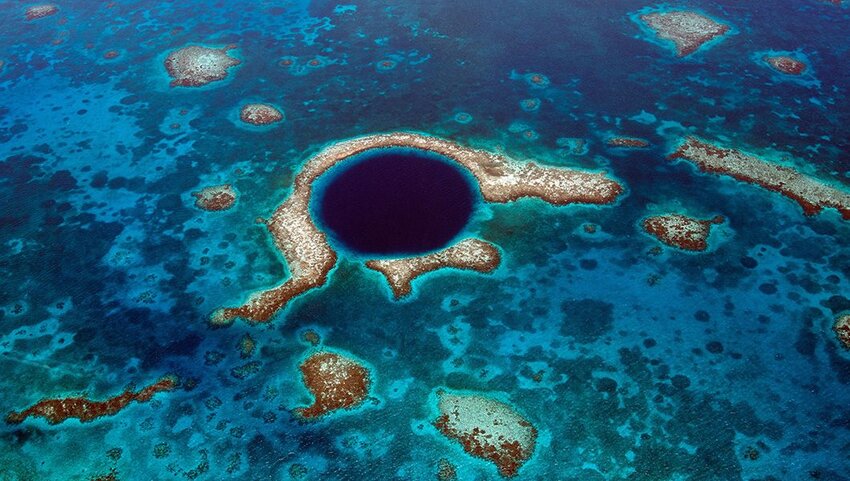
The Great Blue Hole is an enormous submarine sinkhole that lies off the coast of Belize in the Caribbean. Formed many thousands of years ago, the collapsed cave has been flooded thanks to rising sea levels, creating the distinctive formation we see today. From the air, visitors look down on a deep blue circle that measures a jaw-dropping 1043 feet across and 407 feet deep. It’s partially surrounded by a coral atoll which accentuates the difference in the color of the water. It captured the world’s imagination when French oceanographer Jacques Cousteau filmed it in 1971 and its stalactites and abundant marine life continue to attract thousands of divers every year.
Underwater Post Office, Vanuatu
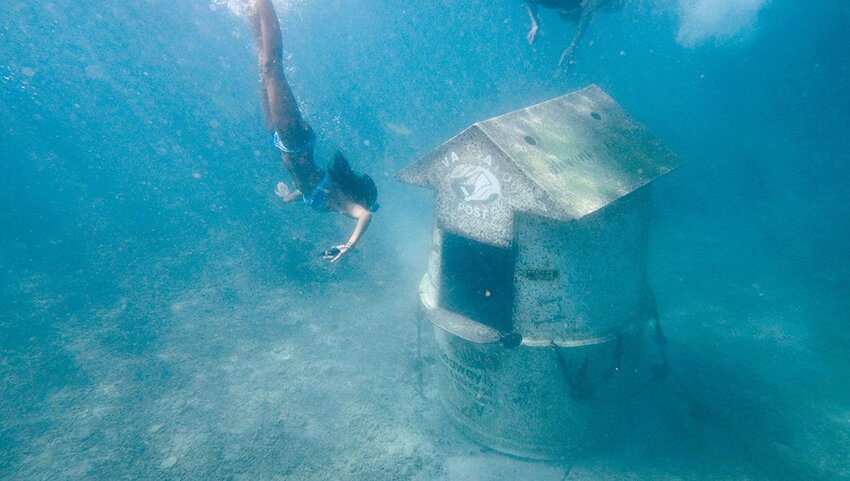
Nothing, it would seem, comes between the Pacific nation of Vanuatu and its postal service. They’ve installed a post box on the slopes of Mount Yasur, a highly active volcano that regularly ejects lava and ash. However, this mailbox it wasn’t the first to appear in an unusual place: in 2003, an underwater post office was set up. Staffed and ready to receive mail, you’ll find it within the Hideaway Island Marine Sanctuary. When you’re ready to send your underwater postcard, look for a raised flag signifying the post office is open for business.
Christ of the Abyss, Key Largo, Florida
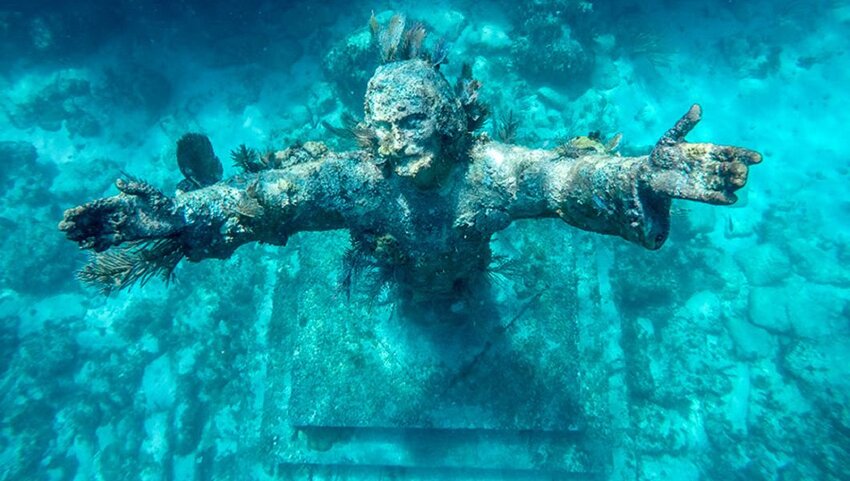
Beneath the water off Key Largo in Florida’s John Pennekamp State Park is a nine-foot-tall statue of Jesus. It’s not unique, however, but a copy of the original Christ of the Abyss which lies beneath the Italian Riviera. Another, cast from the same mold, lies off the coast of Grenada in the Caribbean. The work of Guido Galletti, Florida’s bronze statue was installed on its concrete base in 1965. It’s possible to see the head from the water’s surface, but to snap a selfie you’ll need to don scuba gear and dive. Photo-bombing by marine life such as barracuda or rays is an added bonus.
Molinere Underwater Sculpture Park, Grenada
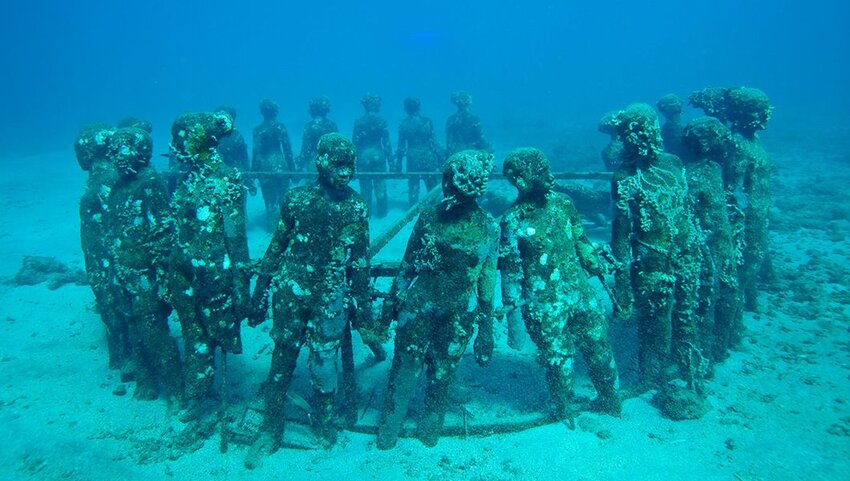
Artist Jason deCaires Taylor's signature work is underwater sculptures made from pH-neutral, non-invasive materials. He’s responsible for many installations across the world but the Molinere Underwater Sculpture Park in Grenada was his first such work. It comprises a range of sculptures that vary in theme and scale, including "The Lost Correspondent," "The Fall from Grace," "Grace Reef," and "The Unstill Life." Since its installation, the Grenadian government has designated it a National Marine Protected Area, which gives extra weight to conservation initiatives.
Under, Norway
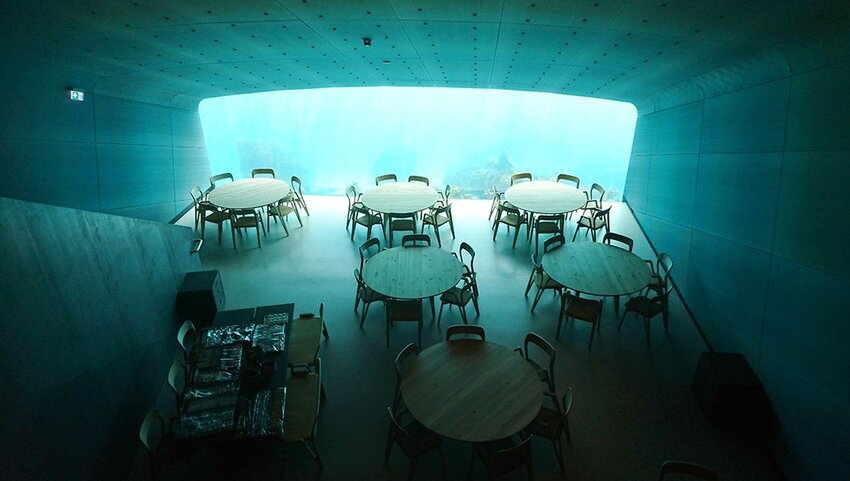
From the shore, at first glance, Under appears to be just another floating restaurant, albeit one that is beautifully designed and worthy of the Michelin star it first gained in 2020. Take a closer look, however, and you’ll see that the far end of the stylish concrete building is partially submerged. Diners who book a table at this cool eatery in Lindesnes in southern Norway will eat at a table five meters under the Atlantic Ocean — no scuba gear required. Fittingly, given the view out onto the seabed and its marine ecosystem, you’ll be served chef Nicolai Ellitsgaard’s “immersion menu.”
The Yongala Shipwreck, Australia
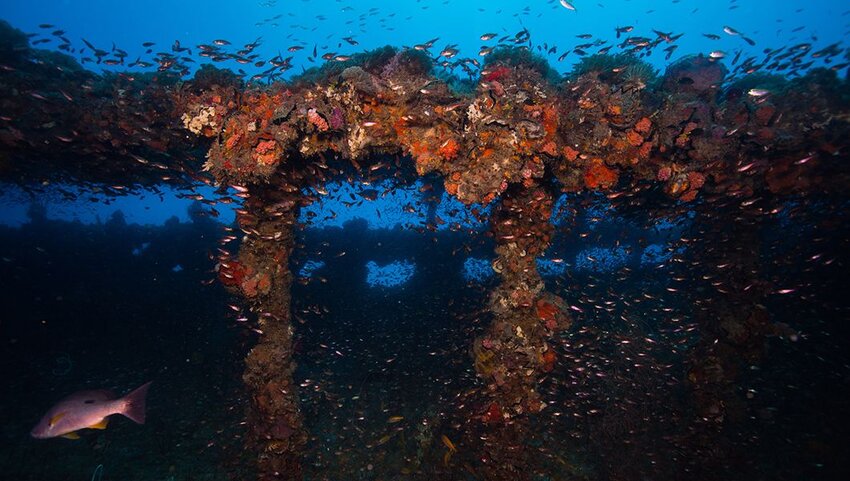
In 1911, the SS Yongala, operated by the Adelaide Steamship Company, sank in a cyclone. She departed from the port of Mackay on the Queensland coast, bound for Townsville. Shortly afterward, word came in that there was a severe storm to the north; it lay right in her path. But she wasn’t equipped with telegraph facilities and there was no way of warning the captain of what was ahead. None of the 122 passengers and crew on board survived the tragedy. The sunken ship was discovered in the 1950s and since then has become a popular wreck diving site. It’s common to see turtles, manta rays, bull and tiger sharks, octopuses and many shoals of fish.
Underwater Waterfall, Mauritius
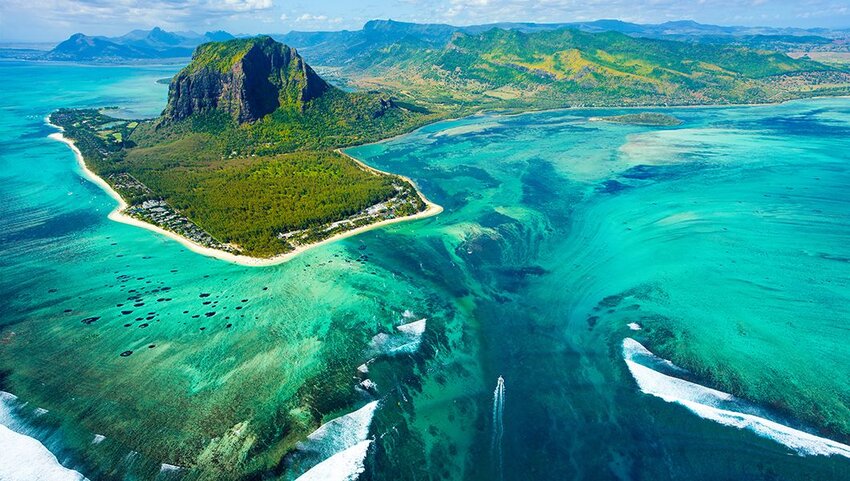
Strictly speaking, this isn’t a waterfall at all. Rather, it’s an optical illusion. Here, off the southern coast of Mauritius at Le Morne peninsula, waves drag sand and sediment off an ocean shelf into much deeper water, sucking it down more than two miles beneath the surface. This movement tricks our brain into thinking there’s an underwater waterfall. Despite appearances to the contrary, this doesn’t impact swimmers’ safety. However, many visiting tourists prefer to look at this curious natural phenomenon from a helicopter or seaplane. From above, the waterfall effect is much more pronounced.

